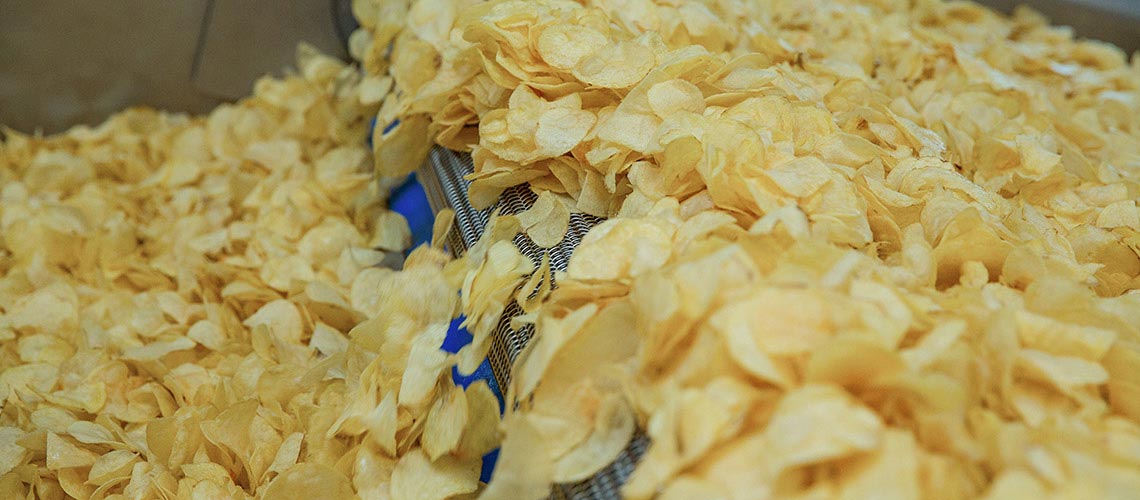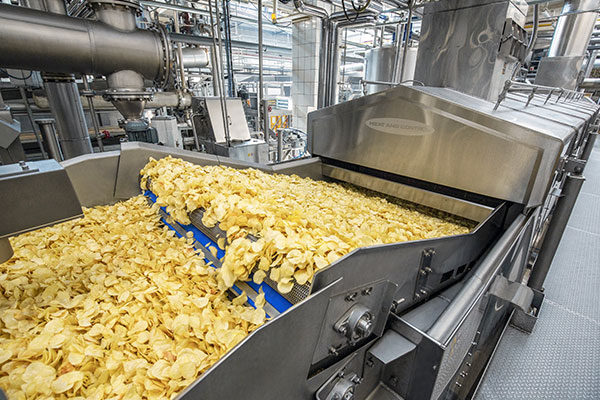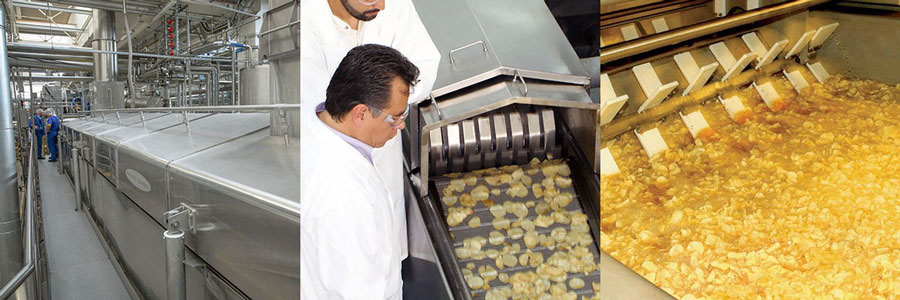Different chips can require different models of equipment, and equipment requirements can vary greatly. Look for a fryer manufacturer that can meet your specific needs.

Producing the best potato chip depends on many factors, but the fryer is usually at the top of the list. Likewise, determining the best fryer design for a potato chip processor also involves many factors. Ultimately, product quality has the highest impact on the decision; however, floor space, production capacity, acquisition price, and the method of heating cooking oil are also important factors. By working with a fryer manufacturer with solid experience custom-designing fryers for each potato chip processor’s unique requirements, the processor can be assured that productivity and product quality will meet expectations and lay the groundwork for future growth.
The first factor to determine the best fryer design is determining the type of potato chip being produced. Does the processor wish to produce a conventional chip or a “hard bite”? Conventional chips are typically produced in a continuous fryer whereas hard bite chips are typically produced in a batch fryer.

Batch fryers are used exclusively for hard bite, slow cooked potato chips due to their unique temperature profile. The high-moisture content of potatoes requires a specially designed batch fryer. Potato-specific batch fryers use a kettle of static, hot oil which is directly heated by a gas burner firing under the fryer pan or by heat-transfer tubes immersed in the oil. These tubes can be heated by a gas burner, steam, or thermal fluid.
As each batch of potato slices enters the oil, the cooking oil temperature initially drops and then gradually increases as the moisture in the potato slice is boiled off and the burner system regains the proper frying temperature. This “inverted bell curve” temperature profile produces the distinctive hard-bite texture that has made these chips the fastest-growing segment of the potato chip market.
The art of adjusting this oil temperature profile gives processors the ability to create subtle differences in chip texture. Once these cooking parameters are set, sophisticated batch fryers use a programmable logic controller (PLC) to assure repeatable frying of each batch of chips. PLC systems give operators control of multiple machines and process functions, pre-programmed product menus, and complete data management at the touch of a single display screen. Heat and Control Batch Fryer capacities range from 35 to more than 500 pounds (16 to more than 227 Kilograms) of finished potato chips per hour.
Although batch fryers give processors several advantages, the production capacity is limited by the fryer’s surface area and heat input capability, and due to the large oil volume, the oil turnover rate is relatively slow. Also, operators must periodically stir the product to cook uniformly and to prevent slices from sticking together in clusters. The Heat and Control Chip-Stirr system automatically stirs slices during cooking and then directs the finished chips to the discharge/drain conveyor.

Continuous fryers are available in numerous designs, varying in heat load, product handling, oil filtration, and production-capacity; however, all commonly cook a continuous flow of product.
Potato products, such as potato chips, sticks, potato co-products (e.g., tots, patties), french fries, or batter-coated fries require an externally-heated continuous fryer design due to the large amount of moisture that must be boiled off during the frying process, as well as factors such as:
Continuous fryers are available for 200 to 6,500lbs (91 to 2,948Kg) of finished potato chips per hour and over 50,000lbs (22,680Kg) of finished french fries per hour. External-heat exchangers heat cooking oil using gas or light fuel oil burners, steam, or thermal fluid. These fryers continuously circulate oil through a filter, an external-heat exchanger, and single or multiple inlets and outlets in the fryer. Continuous oil circulation provides multiple advantages:
Unique characteristics and production capacities of different potato products have prompted the development of specially-designed continuous fryer systems, including multi-zone fryers, multi-stage fryers, thermal-fluid-heated fryers, and vacuum fryers.
In these fryers, oil is introduced and removed at different points along the length of the fryer pan to provide accurate control of the temperature drop that occurs during cooking, known as Delta-T. This enables processors to develop custom color and texture characteristics for different products and also permits frying at lower temperatures, which produces lighter color product and reduces oil degradation.
These are a variation of the multi-zone design and provide a greater range of frying temperatures. Each fryer stage uses a separate continuous oil filter, oil-circulation pump, and heat exchanger. Multi-stage fryer systems are especially useful for batter-coated fries, french fries, or co-products, such as tater tots and patties.
For a processor which wants the flexibility to cook both hard bite and conventional chips, Heat and Control offers the Universal Product Cooker (UPC). The UPC is a versatile, economical fryer which utilizes independent fryer modules integrated into one continuous system to produce kettle-style, traditional potato chips, and other types of snacks from the one fryer. It allows an operator to adjust time, temperature, and oil flow in each module to customize a recipe and to create a variety of styles of chips with specific texture, moisture, and color.
This direct-heated fryer uses a patent-pending thermal-fluid heat exchanger that heats oil uniformly throughout the fryer. A fines removal conveyor and spacing between the heat-transfer tubes prevent product particles from accumulating inside the fryer.
Operating at 10 percent or less of normal atmospheric pressure, a vacuum fryer boils off product moisture at a lower temperature than traditional fryers. This allows high-sugar content potatoes to be fried without browning of finished chips. Formation of acrylamide can be controlled because oil temperature can be kept below the 248°F (120°C) point at which acrylamide forms. The Heat and Control Unitized Vacuum Fryer® design requires no external-vacuum enclosure and takes the same general amount of floor space as conventional, externally-heated, continuous fryers. This allows processors to get the benefits of vacuum frying without the complexity of an external vacuum chamber.
When sourcing equipment, potato chip processors should look for equipment that incorporates manufacturing designs that offer benefits for their specific product and delivers product quality and productivity that meets current expectations and that allows for future growth.
